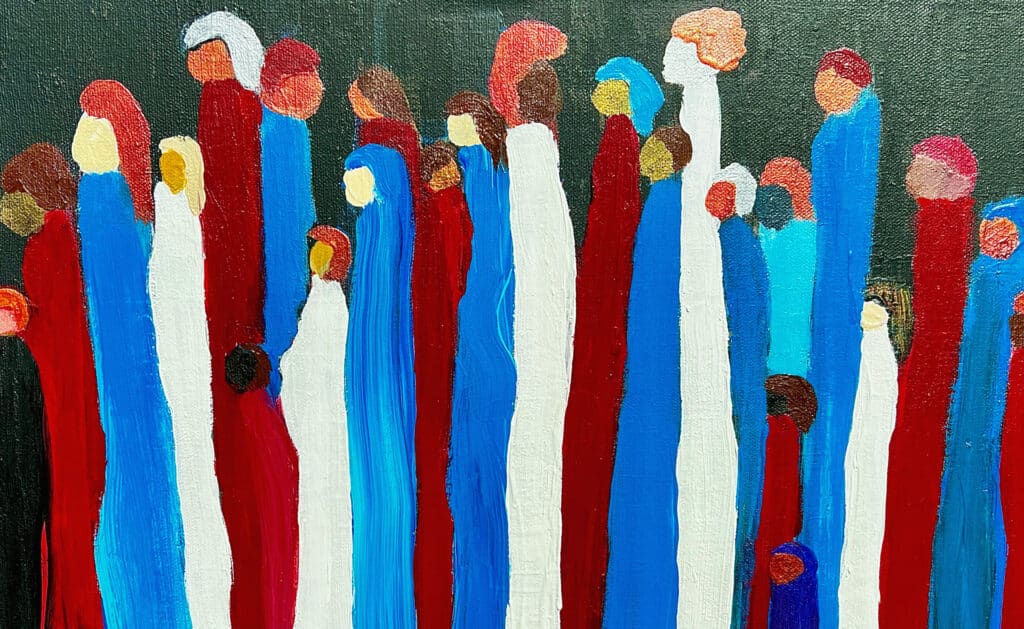
During the summer of 2020, local newsrooms around the country learned hard lessons about safety while covering protests, rallies and campaign events. But journalists need to understand that summer of unrest “was just a good warmup for what we’re going to see in the next election,” says Nadine Hoffman, deputy director of the International Women’s Media Foundation.
“I would say the level of concern is very high,” Hoffman told API. “It’s going to be really a problematic time for journalists’ safety.”
Do you know how to stay safe during protests, rallies and interviews?
Journalists at several protests were injured, arrested by police while trying to cover the story https://t.co/13o6S2erSQ
— The Washington Post (@washingtonpost) May 31, 2020
It’s particularly urgent if you’re in a high-risk “identity group” — female; journalist of color; LGBTQI journalist; or a reporter who covers controversial issues in education, science, health or politics.
IWMF is among the experts urging media organizations to do identity-based risk assessments for their journalists, so they can make plans for protection online and in person during campaigns and elections.
“That needs to happen now,” says Hoffman, “so that we aren’t dealing with a much worse situation — cleaning up after an attack or worse, seeing somebody at your front door who’s tracked you down online and possibly is coming to do you harm in a real-world setting.”
The New York Times has joined with the Committee to Protect Journalists (CPJ) to convene media security staff around the country. “What will come out of this, we hope, is a better way for us all to communicate, but also understanding the gaps” in media safety during the elections, Lucy Westcott, CPJ’s emergencies director, told API. The group’s work will be shared with other U.S. newsrooms, Westcott says.
This will help smaller local and regional newsrooms that not only don’t have designated security staff (the New York Times has a director of newsroom safety and a vice president of corporate security) but may not even think there’s a problem.
Westcott recalls sending a survey a few years ago to all U.S. state press associations to ask about their security concerns and issues — and getting only about five responses. Those responses, says Westcott, were: “We’re not worried. This isn’t a problem.”
“And then we had an explosion of protests across the country. And then of course we had January 6,” says Westcott.
So what should local newsrooms do now? First, do risk assessments for your journalists; CPJ offers this template as a starting point. And remember that reporters who cover beats that include extremist groups or election security, for example, may be high-risk.
“We never want to stop the best reporter from going out there and covering the story,” Maria Salazar Ferro, director of newsroom safety and resilience at the New York Times, told API. “We just want to think about all points of vulnerability and mitigate for them.”
Reporters should also be ready to do real-time risk assessments, for example, before covering a rally or a protest at a campaign appearance. Beat reporters typically have the sources to get intelligence on which groups might be at the event and the threat level. Journalists can also use the U.S. Press Freedom Tracker for past threats against the media, where they took place and who was involved.
But the most immediate task, especially for journalists of color and women, is to prepare for digital attacks. CPJ’s checklist includes:
- Change all social media accounts to use two-factor authorization. And don’t reuse passwords.
- Search your name on the Internet, using a variety of browsers. If you see anything that could be used against you or could identify personal information, remove it using a service such as DeleteMe.
- Remove any personal identifiers from all social media accounts: phone numbers, spouse’s name, and (warning to all journalists making back-to-school posts) photos of your kids on your front porch — especially with your address in plain view.
- Ask family and friends to remove photos of you from their social media sites, or change the level of access.
- Keep a record of not only threats, but posts, emails and phone calls that raise concern. Of course, report threats of physical harm to police.
- Make sure safety equipment is clean, in working condition, fits properly and has batteries.
- Management should be involved in the newsroom’s “online hygiene” process, plan for incidents in which an employee needs to relocate to another home, and help craft responses to online harassment.
Up next: Training, funding and where to find help.
Share with your network
'Not normal': What local newsrooms can do now to prepare for a series of historic elections
You also might be interested in:
As the American Press Institute marks 80 years, we’ll honor our legacy by continuing to respond to the evolving needs of news leaders. Our upcoming API Local News Summits will explore three critical places where democracy and sustainability intersect.
Reaching younger audiences has long been a challenge for media organizations. As platforms evolve, trust in news shifts and news avoidance grows, it can feel especially difficult to connect with and serve multigenerational audiences in an authentic and sustainable way. How can news leaders do their part to represent and include community perspectives from members of different age groups?
For us, we knew one of our biggest hurdles to success would be challenging the assumptions, both spoken and unspoken, we held for others. Here’s what we’ve learned over the past three years of gathering multigenerational problem-solvers.




